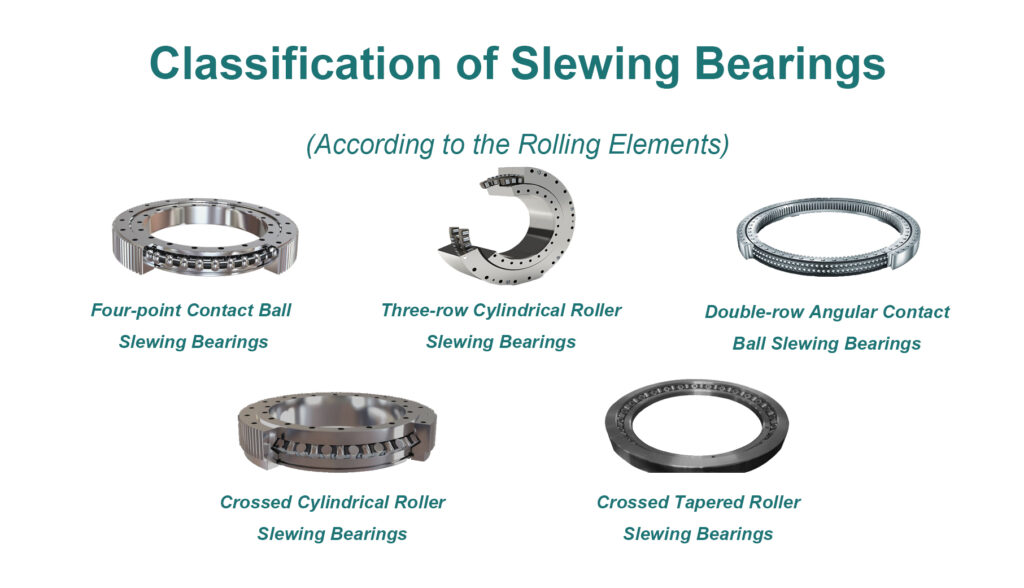Slewing bearings are essential components widely used in construction machinery, wind turbines, robotics, medical equipment and many other industrial applications. There are several classification of slewing bearings based on their rolling elements. Each design has unique load capacities and ideal applications. This article covers five common types to help you choose the right one for your equipment.

Four-point Contact Ball Slewing Bearings
Four point contact ball slewing bearings are the most common type. They can support axial loads, radial loads and tilting moments simultaneously. The four-point contact between the balls and the raceway enables the bearing to support loads from multiple directions in a single row design. These bearings are ideal for medium-load applications such as lifting equipment, rotary tables and packaging machinery.
Three-row Cylindrical Roller Slewing Bearings
With separate rows for axial and radial loads, three-row cylindrical roller slewing bearings offer the highest load carrying capacity of all slewing bearing types. They are ideal for extra-large applications such as tunnel boring machines, harbor cranes and heavy lifting platforms.
Double-row Angular Contact Ball Slewing Bearings
The type of rolling element used in slewing bearings has a direct impact on their load carrying capacity, performance and service life. Understanding the classification of slewing bearings-such as ball, roller or cross-roller designs-is essential when selecting the right bearing for your equipment. Key factors such as operating conditions, load types (axial, radial, or combined), and precision requirements must be matched to the bearing design. Partnering with a professional slewing bearing manufacturer not only ensures high quality products tailored to these criteria, but also comprehensive support in design, installation and after-sales service.Double Row Angular Contact Ball Slewing Bearings With two rows of balls, double row angular contact ball slewing bearings offer greater load capacity than their single row counterparts, particularly for supporting high tilting moments. They are commonly used in heavy equipment such as cranes, tower lifts and large excavators.
Crossed Cylindrical Roller Slewing Bearings
Crossed cylindrical roller bearings feature orthogonally arranged rollers that intersect at right angles. This compact design allows the bearing to withstand high axial, radial, and moment loads while providing high positioning accuracy. Commonly used in robotics, precision machinery, and radar systems, these bearings are ideal where space and accuracy are critical.
Crossed Tapered Roller Slewing Bearings
Similar in structure to crossed cylindrical roller bearings, crossed tapered roller bearings use tapered rollers, allowing them to handle higher moment loads and deliver greater rigidity. These bearings are widely used in wind turbines, mining equipment, and heavy lifting applications.
Summarize
The type of rolling element used in slewing bearings affects their load capacity, performance and life. Common types include ball, roller and cross-roller designs. Choosing the right type is critical based on operating conditions, load types (axial, radial, or combined), and accuracy requirements. Working with a professional manufacturer ensures high quality products and support in design, installation and after-sales service.
If you have any needs, please feel free to contact us at [email protected].

 WhatsApp :
WhatsApp :  Phone : +1(617)816-5811
Phone : +1(617)816-5811  Skype :
Skype : E-mail :
E-mail :